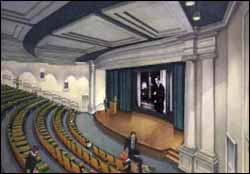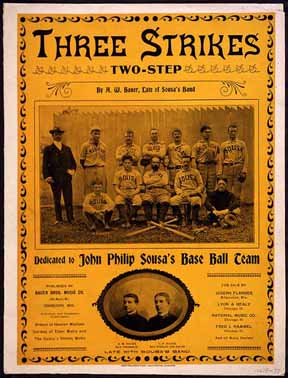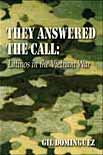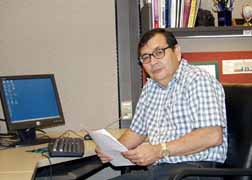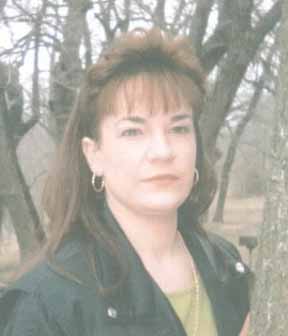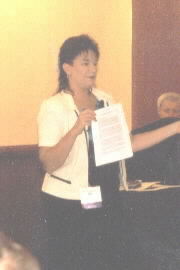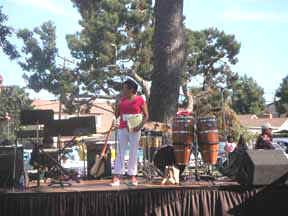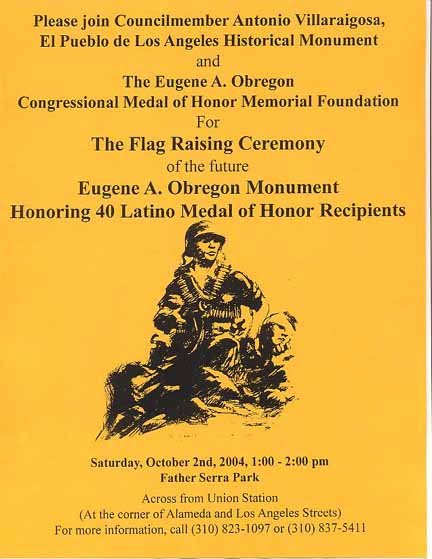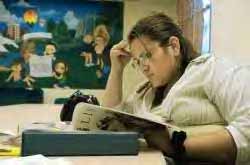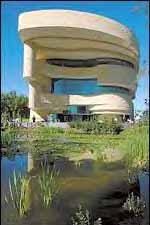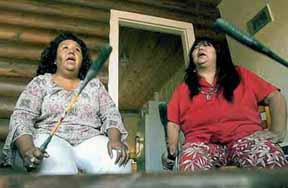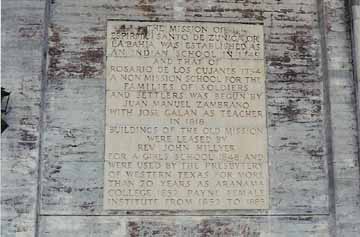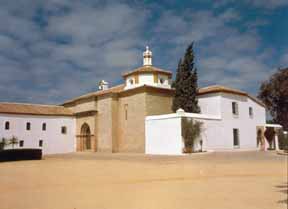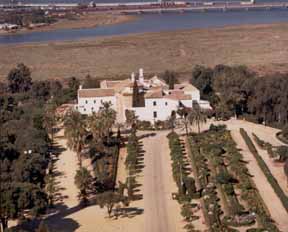Generation No. 1
1. FELIPE DE JESUS3 ZAMBRANO (JOSE FRANCISCO ANTONIO2, JOSE FRANCISCO ANTONIO1) was born Abt. 1829 in Mexico-1860 Census. He married MARIA ANTONIA CAMILA CANTU September 18, 1854 in Mier, Tamaulipas, Mexico, daughter of JOSE CANTU and MARIA PEREZ.
More About FELIPE DE JESUS ZAMBRANO:
AKA (Facts Page): Jose Felipe Zambrano
Baptism: February 15, 1829, Mier, Tamaulipas, Mexico
More About MARIA ANTONIA CAMILA CANTU:
Baptism: July 18, 1837, Mier, Tamaulipas, Mexico
Children of FELIPE ZAMBRANO and MARIA CANTU are:
2. i. JOSE TEODORO4 ZAMBRANO, b. April 01, 1854, Mier, Tamaulipas, Mexico- 1900 Census B: April 1857; d. March 04, 1935, Kenedy, Texas - Buried at Ross Cemetery.
ii. JOSE BERNARDO ZAMBRANO, b. Abt. 1858, Mier, Tamaulipas, Mexico.
More About JOSE BERNARDO ZAMBRANO:
Baptism: September 14, 1858, Mier, Tamaulipas, Mexico
3. iii. JOSE ANACLETO ZAMBRANO, b. July 1861, Mier, Tamaulipas, Mexico.
iv. ANTONIO ZAMBRANO, b. Abt. 1867, Mier, Tamaulipas, Mexico; d. at a young age.
4. v. TIBUSCIO ZAMBRANO, b. Abt. 1870, Texas-1900 Census.
vi. MARTHA ZAMBRANO, b. Abt. 1873.
vii. ABRAHAM ZAMBRANO, b. Abt. 1875.
More About ABRAHAM ZAMBRANO:
Baptism: May 01, 1875, Mier, Tamaulipas, Mexico
Generation No. 2
2. JOSE TEODORO4 ZAMBRANO (FELIPE DE JESUS3, JOSE FRANCISCO ANTONIO2, JOSE FRANCISCO ANTONIO1)1 was born April 01, 1854 in Mier, Tamaulipas, Mexico- 1900 Census B: April 18571, and died March 04, 1935 in Kenedy, Texas - Buried at Ross Cemetery1. He married ANSELMA RUIZ VELASQUEZ1, daughter of TORIVIO VELASQUEZ and JULIANA RUIZ.
Notes for JOSE TEODORO ZAMBRANO:
1900 census show date of birth April 1857
headstone at Ross Cemetery show 1854
death certificate shows 1850[Zambrano Family Tree.FBK.FBK.FTW]
1900 census show date of birth April 1857
headstone at Ross Cemetery show 1854
death certificate shows 1850
More About JOSE TEODORO ZAMBRANO:
Baptism: April 07, 1856, Mier, Tamaulipas, Mexico1
Notes for ANSELMA RUIZ VELASQUEZ:
1900 census shows date of birth April 1867 age 33
headstone at Ross Cemetery shows 1872
[Zambrano Family Tree.FBK.FBK.FTW]
1900 census shows date of birth April 1867 age 33
headstone at Ross Cemetery shows 1872
Children of JOSE ZAMBRANO and ANSELMA VELASQUEZ are:
5. i. PETRA5 ZAMBRANO, b. January 1882, Kenedy, Texas.
6. ii. TEODORO ZAMBRANO, b. April 22, 1885, Kenedy, Texas.
7. iii. GREGORIO ZAMBRANO, b. February 1886, Kenedy, Texas.
iv. WENCESLAO ZAMBRANO1, b. September 28, 1888, Kenedy, Texas1; d. March 1978, Grulla, Texas1; m. RAFAELA1.
Notes for WENCESLAO ZAMBRANO:
1880 census show date of birth September 1891
Social Security No. 458-86-1895[Zambrano Family Tree.FBK.FBK.FTW]
1880 census show date of birth September 1891
Social Security No. 458-86-1895
8. v. ERLINDA ZAMBRANO, b. August 1889, Kenedy, Texas.
9. vi. EUFEMIA ZAMBRANO, b. March 1894, Kenedy, Texas.
vii. LUCIA ZAMBRANO1, b. December 1895, Kenedy, Texas1.
10. viii. FELIPE ZAMBRANO, b. May 20, 1901, Kenedy, Texas; d. January 26, 1941, Beeville, Texas-Buried at Ross Cemetery.
ix. JULIA ZAMBRANO1, b. Abt. 1904.
x. JUAN ANTONIO ZAMBRANO1, b. Abt. 1907.
11. xi. VICTORIA ZAMBRANO, b. June 14, 1908, Kenedy, Texas; d. January 09, 1977, Beeville, Texas.
xii. ALEJANDRO ZAMBRANO1, b. Abt. 1910.
3. JOSE ANACLETO4 ZAMBRANO (FELIPE DE JESUS3, JOSE FRANCISCO ANTONIO2, JOSE FRANCISCO ANTONIO1) was born July 1861 in Mier, Tamaulipas, Mexico. He married DOROTEA RUIZ VELASQUEZ.
Children of JOSE ZAMBRANO and DOROTEA VELASQUEZ
are:
i. JOSEFA5 ZAMBRANO, b. November 1886.
12. ii. LEANDRO ZAMBRANO, b. March 1893; d. San Patricio.
13. iii. RICARDO V ZAMBRANO, b. February 07, 1896, Kenedy, Texas; d. December 1972, Kenedy, Texas.
iv. ANACLETO ZAMBRANO, b. July 1897.
v. HILARIO ZAMBRANO, b. Abt. 1902.
4. TIBUSCIO4 ZAMBRANO (FELIPE DE JESUS3, JOSE FRANCISCO ANTONIO2, JOSE FRANCISCO ANTONIO1) was born Abt. 1870 in Texas-1900 Census. He married (1) ESTEFANA. He married (2) JOVITA JIMENEZ.
Children of TIBUSCIO ZAMBRANO and ESTEFANA are:
i. APOLINAR5 ZAMBRANO, b. July 23, 1897; d. October 22, 1988, Beeville, Texas.
Notes for APOLINAR ZAMBRANO:
Social Security # 464-58-4040 Born July 23, 1897
ii. INEZ ZAMBRANO, b. Abt. 1899, Texas-1900 Census.
Children of TIBUSCIO ZAMBRANO and JOVITA JIMENEZ are:
14. iii. BENITO5 ZAMBRANO, b. August 06, 1918; d. August 25, 1997, Alice, Texas.
15. iv. GREGORIO ZAMBRANO.
16. v. HERLINDA ZAMBRANO, b. March 26.
17. vi. JULIO SEMBRANO, b. February 16, 1926; d. October 13, 1997, Concepcion, Texas.
Generation No. 3
5. PETRA5 ZAMBRANO (JOSE TEODORO4, FELIPE DE JESUS3, JOSE FRANCISCO ANTONIO2, JOSE FRANCISCO ANTONIO1)1 was born January 1882 in Kenedy, Texas1. She married JUAN VELA1.
Children of PETRA ZAMBRANO and JUAN VELA are:
i. MARTA6 VELA1.
18. ii. AURELIA VELA.
6. TEODORO5 ZAMBRANO (JOSE TEODORO4, FELIPE DE JESUS3, JOSE FRANCISCO ANTONIO2, JOSE FRANCISCO ANTONIO1) was born April 22, 1885 in Kenedy, Texas. He married ANASTACIA.
More About TEODORO ZAMBRANO:
Burial: Ross Cemetery
More About ANASTACIA:
Burial: Ross Cemetery
Children of TEODORO ZAMBRANO and ANASTACIA
are:
i. ELVERA6 ZAMBRANO, b. Abt. 1906.
19. ii. OTILIA ZAMBRANO, b. Abt. 1910.
20. iii. SIMON ZAMBRANO, b. Abt. 1912.
iv. CLEMENCIA ZAMBRANO, b. Abt. 1914.
v. JESUS ZAMBRANO, b. Abt. 1916.
vi. TEODORO ZAMBRANO, b. Abt. 1918.
7. GREGORIO5 ZAMBRANO (JOSE TEODORO4, FELIPE DE JESUS3, JOSE FRANCISCO ANTONIO2, JOSE FRANCISCO ANTONIO1) was born February 1886 in Kenedy, Texas. He married JOSEFINA
CURIEL.
Children of GREGORIO ZAMBRANO and JOSEFINA CURIEL are:
i. GREGORIO6 ZAMBRANO, b. Abt. 1920, killed himself in middle 1960's.
ii. LOUIS ZAMBRANO, b. 1914.
21. iii. TELEFORO ZAMBRANO, b. October 15, 1915, Skidmore; d. January 1984, Corpus Christi, Texas.
8. ERLINDA5 ZAMBRANO (JOSE TEODORO4, FELIPE DE JESUS3, JOSE FRANCISCO ANTONIO2, JOSE FRANCISCO ANTONIO1)1 was born August 1889 in Kenedy, Texas1. She married PORFIRIO TAPIA1 October 13, 1906 in Kenedy, Texas.
Children of ERLINDA ZAMBRANO and PORFIRIO TAPIA are:
i. PORFIRIO6 TAPIA1, m. AUGUSTINA G MORON.
ii. ISIDRO TAPIA1.
iii. MARIA TAPIA1.
iv. GABRIEL TAPIA1.
v. CELESTINA TAPIA1.
vi. SANTOS TAPIA1.
vii. GENOVEVA TAPIA1.
viii. JUAN TAPIA1.
ix. DOLORES TAPIA1.
x. ANSELMA TAPIA1.
9. EUFEMIA5 ZAMBRANO (JOSE TEODORO4, FELIPE DE JESUS3, JOSE FRANCISCO ANTONIO2, JOSE FRANCISCO ANTONIO1)1 was born March 1894 in Kenedy, Texas1. She married EUFRACIO RODRIGUEZ1 Abt. 1909 in Kenedy, Texas.
Children of EUFEMIA ZAMBRANO and EUFRACIO RODRIGUEZ are:
22. i. EUFRACIO6 RODRIGUEZ, b. Abt. 1910.
ii. LEONARDO RODRIGUEZ1, b. Abt. 1915.
iii. MIGUEL RODRIGUEZ1, b. Abt. 1920.
iv. JUANITA RODRIGUEZ1.
10. FELIPE5 ZAMBRANO (JOSE TEODORO4, FELIPE DE JESUS3, JOSE FRANCISCO ANTONIO2, JOSE FRANCISCO ANTONIO1)1 was born May 20, 1901 in Kenedy, Texas1, and died January 26, 1941 in Beeville, Texas-Buried at Ross Cemetery1. He married JULIA HINOJOSA1, daughter of TOMAS HINOJOSA and PAULA GONZALES.
Children of FELIPE ZAMBRANO and JULIA HINOJOSA are:
23. i. EFREN6 ZAMBRANO, b. October 01, 1922, Beeville, Texas.
24. ii. ELIGIO ZAMBRANO, b. December 01, 1924, Beeville, Texas; d. February 07, 1995, W. Chicago, IL-Buried at Calvary Cemetery.
25. iii. SELIA ZAMBRANO, b. November 27, 1926, Beeville, Texas.
26. iv. BEATRICE ZAMBRANO, b. November 02, 1928, Beeville, Texas.
27. v. FELIPE HINOJOSA ZAMBRANO, b. November 10, 1931, Skidmore, Texas.
28. vi. ERNESTINA ZAMBRANO, b. November 07, 1933, Beeville, Texas.
29. vii. JULIA ZAMBRANO, b. January 14, 1934, Beeville, Texas.
30. viii. ZENAIDO ZAMBRANO, b. May 27, 1936, Beeville, Texas.
31. ix. HORTENSIA ZAMBRANO, b. December 10, 1938, Beeville, Texas.
32. x. MARTHA VELA, b. May 10, 1944, Beeville, Texas.
11. VICTORIA5 ZAMBRANO (JOSE TEODORO4, FELIPE DE JESUS3, JOSE FRANCISCO ANTONIO2, JOSE FRANCISCO ANTONIO1)1 was born June 14, 1908 in Kenedy, Texas1, and died January 09, 1977 in Beeville, Texas1. She married (1) VICTORIANO ROMERO1. She married (2) DOMINGO CASAREZ1. She married (3) JOSE JASSO1.
Notes for VICTORIA ZAMBRANO:
[Zambrano Family Tree.FBK.FBK.FTW]
Buried at the Our Lady of Victory #2 - Beeville, TX
hildren of VICTORIA ZAMBRANO and VICTORIANO ROMERO are:
33. i. PAULA6 ROMERO, b. March 02, 1926.
ii. DONACIANO ROMERO1, b. September 06, 1927; d. June 22, 1988, San Antonio, Texas.
More About DONACIANO ROMERO:
Burial: June 24, 1988, Fort Sam Houston National Cemetery , Bexar County Plot: 8A 1431
Children of VICTORIA ZAMBRANO and DOMINGO CASAREZ are:
iii. IDA6 CASAREZ1, m. DIMOS GAMBOA SANCHEZ.
iv. LOUIS CASAREZ1, b. May 10, 1931.
v. SALOME CASAREZ1, b. January 30, 1933.
34. vi. CLAUDINA CASAREZ, b. August 11, 1935, Clairbille, Texas, Bee County.
vii. RAMONA CASAREZ1, b. August 22, 1942.
12. LEANDRO5 ZAMBRANO (JOSE ANACLETO4, FELIPE DE JESUS3, JOSE FRANCISCO ANTONIO2, JOSE FRANCISCO ANTONIO1) was born March 1893, and died in San Patricio. He married ALEJANDRINA ZAMORA.
Children of LEANDRO ZAMBRANO and ALEJANDRINA ZAMORA are:
i. NASARIA6 ZAMBRANO, m. ESTEBAN MARTINEZ.
ii. FELICIANA ZAMBRANO.
iii. DOROTEA ZAMBRANO.
iv. JUAN ZAMBRANO, b. January 01, 1927; d. November 28, 1989.
More About JUAN ZAMBRANO:
Social Security Number: 456-42-2452
v. ALEJANDRO ZAMBRANO, b. 1930; m. FRANCISCA MUNOZ.
35. vi. COMODORO ZAMBRANO.
13. RICARDO V5 ZAMBRANO (JOSE ANACLETO4, FELIPE DE JESUS3, JOSE FRANCISCO ANTONIO2, JOSE FRANCISCO ANTONIO1) was born February 07, 1896 in Kenedy, Texas, and died December 1972 in Kenedy, Texas. He married TEODORA GARCIA, daughter of ENRIQUE GARCIA and ANTONIA PEREZ.
Notes for RICARDO V ZAMBRANO:
Social Security# 465-09-4633
Children of RICARDO ZAMBRANO and TEODORA GARCIA are:
36. i. RICARDO G.6 ZAMBRANO, b. October 10, 1917, Kenedy, Texas; d. November 15, 1999, Casa Grande, Arizona.
ii. ENRIQUE ZAMBRANO, b. Abt. 1920.
iii. ELIDA ZAMBRANO.
iv. MACLOVIA ZAMBRANO, b. December 03, 1927.
v. AIDA ZAMBRANO.
vi. NOEMI ZAMBRANO.
vii. ISAIAS ZAMBRANO, b. February 19, 1945.
viii. ANTONIA ZAMBRANO.
14. BENITO5 ZAMBRANO (TIBUSCIO4, FELIPE DE JESUS3, JOSE FRANCISCO ANTONIO2, JOSE FRANCISCO ANTONIO1) was born August 06, 1918, and died August 25, 1997 in Alice, Texas. He married REYMUNDA VASQUEZ.
More About BENITO ZAMBRANO:
Social Security Number: 451-18-1781
Children of BENITO ZAMBRANO and REYMUNDA VASQUEZ are:
i. BENITO6 ZAMBRANO, JR..
ii. MARIA ZAMBRANO.
37. iii. JOSE ZAMBRANO, b. 1946.
iv. JESUSA ZAMBRANO.
v. GLORIA ZAMBRANO.
vi. ANGELITA ZAMBRANO.
vii. REGELIO ZAMBRANO.
viii. EVE ZAMBRANO.
ix. JOSE ZAMBRANO.
15. GREGORIO5 ZAMBRANO (TIBUSCIO4, FELIPE DE JESUS3, JOSE FRANCISCO ANTONIO2, JOSE FRANCISCO ANTONIO1). He married DELMIRA LYDIA
PERALES.
More About DELMIRA LYDIA PERALES:
Social Security Number: 381-64-2877
Children of GREGORIO ZAMBRANO and DELMIRA PERALES are:
i. GREGRIO6 ZAMBRANO, JR..
ii. ANTONIO ZAMBRANO.
iii. CONSULO ZAMBRANO.
iv. ROSALINDA ZAMBRANO, b. August 15, 1949, Jim Wells County, Texas.
v. LUSCIA ZAMBRANO.
vi. MARY ZAMBRANO.
vii. JOSE ZAMBRANO.
16. HERLINDA5 ZAMBRANO (TIBUSCIO4, FELIPE DE JESUS3, JOSE FRANCISCO ANTONIO2, JOSE FRANCISCO ANTONIO1) was born March 26. She married MANUEL ESPINO, son of MANUEL ESPINO.
More About MANUEL ESPINO:
Social Security Number: 455-12-9888
Children of HERLINDA ZAMBRANO and MANUEL ESPINO are:
i. GUADALUPE6 ESPINO, m. OLIVAREZ.
ii. ESPERANZA ESPINO, m. MUNOZ.
iii. JUANA ESPINO, b. June 17, 1941, Duval County, Texas.
iv. MANUEL JR ESPINO, b. November 13, 1942.
38. v. ALBERT ESPINO, b. November 15, 1944, Kingsville, Texas; d. January 19, 1979, Kingsville, Texas.
vi. JOVITA ESPINO, b. October 14, 1946.
vii. CONSUELO ESPINO, b. May 16, 1948.
39. viii. OLGA ESPINO, b. June 27, 1950.
ix. ANTONIO ESPINO, b. July 10, 1955.
x. JULIA ESPINO, b. July 26, 1952; m. SANCHEZ.
xi. NOE ESPINO, b. May 17, 1958; m. CARMEN UTLEY, March 27, 1982.
xii. DIANA LEONOR, b. April 12, 1954.
xiii. GREGORIO ESPINO, b. April 20, 1960, Kingsville, Texas; d. March 02, 1978, Kingsville, Texas.
More About GREGORIO ESPINO:
Social Security Number: 465-19-5258
xiv. ANNABELLE ESPINO, b. August 29, 1962; d. NO CHILDREN, NOT MARRIED.
17. JULIO5 SEMBRANO (TIBUSCIO4 ZAMBRANO, FELIPE DE JESUS3, JOSE FRANCISCO ANTONIO2, JOSE FRANCISCO ANTONIO1) was born February 16, 1926, and died October 13, 1997 in Concepcion, Texas. He married JULIA VERA November 15, 1945.
Children of JULIO SEMBRANO and JULIA VERA are:
40. i. OVIDIO6 SEMBRANO.
41. ii. ALEJO SEMBRANO, b. August 1956.
iii. LUDIVINA SEMBRANO.
Generation No. 4
18. AURELIA6 VELA (PETRA5 ZAMBRANO, JOSE TEODORO4, FELIPE DE JESUS3, JOSE FRANCISCO ANTONIO2, JOSE FRANCISCO ANTONIO1)1. She married LIBRAVO LEAL1.
Child of AURELIA VELA and LIBRAVO LEAL is:
i. HORTENSIA7 LEAL1, m. QUINBAR1.
19. OTILIA6 ZAMBRANO (TEODORO5, JOSE TEODORO4, FELIPE DE JESUS3, JOSE FRANCISCO ANTONIO2, JOSE FRANCISCO ANTONIO1) was born Abt. 1910. She married LINO L. GARCIA.
Children of OTILIA ZAMBRANO and LINO GARCIA are:
i. LINO G7 GARCIA, b. March 30, 1943.
ii. EVANGELINA GARCIA, b. April 14, 1944.
20. SIMON6 ZAMBRANO (TEODORO5, JOSE TEODORO4, FELIPE DE JESUS3, JOSE FRANCISCO ANTONIO2, JOSE FRANCISCO ANTONIO1) was born Abt. 1912. He married TRINIDAD ADAMES.
Children of SIMON ZAMBRANO and TRINIDAD ADAMES are:
i. JOSE A7 ZAMBRANO, b. September 18, 1940.
ii. SIMON A ZAMBRANO, b. November 08, 1942.
iii. JESUS A ZAMBRANO, b. December 13, 1947.
21. TELEFORO6 ZAMBRANO (GREGORIO5, JOSE TEODORO4, FELIPE DE JESUS3, JOSE FRANCISCO ANTONIO2, JOSE FRANCISCO ANTONIO1) was born October 15, 1915 in Skidmore, and died January 1984 in Corpus Christi, Texas. He married CONCEPCION REYES August 08, 1943.
Child of TELEFORO ZAMBRANO and CONCEPCION REYES is:
i. MARY JOSEPHINE7 ZAMBRANO, b. July 11, 1949.
22. EUFRACIO6 RODRIGUEZ (EUFEMIA5 ZAMBRANO, JOSE TEODORO4, FELIPE DE JESUS3, JOSE FRANCISCO ANTONIO2, JOSE FRANCISCO ANTONIO1)1 was born Abt. 1910. He married CONCEPION CANTU1, daughter of MONICO CANTU.
Children of EUFRACIO RODRIGUEZ and CONCEPION CANTU are:
42. i. JOSEPH7 RODRIGUEZ, b. June 15, 1947, Beeville, Texas.
ii. EUFEMIA RODRIGUEZ.
iii. ANTONIA RODRIGUEZ.
iv. EUFRACIO RODRIGUEZ.
23. EFREN6 ZAMBRANO (FELIPE5, JOSE TEODORO4, FELIPE DE JESUS3, JOSE FRANCISCO ANTONIO2, JOSE FRANCISCO ANTONIO1)1 was born October 01, 1922 in Beeville, Texas1. He married AMALIA ALVIAR1.
Children of EFREN ZAMBRANO and AMALIA ALVIAR are:
i. EFREN7 ZAMBRANO, JR.1.
ii. JANA MARIA ZAMBRANO1.
iii. ENSELMA ZAMBRANO1.
iv. TEODORO ZAMBRANO1.
24. ELIGIO6 ZAMBRANO (FELIPE5, JOSE TEODORO4, FELIPE DE JESUS3, JOSE FRANCISCO ANTONIO2, JOSE FRANCISCO ANTONIO1)1 was born December 01, 1924 in Beeville, Texas1, and died February 07, 1995 in W. Chicago, IL-Buried at Calvary Cemetery1. He married MIQUELA POSADA1.
Children of ELIGIO ZAMBRANO and MIQUELA POSADA are:
43. i. ERMALINDA7 ZAMBRANO.
ii. JULIA ZAMBRANO1, m. SALVADOR BARRIENTES1.
iii. VICTORIA ZAMBRANO1, m. RUBEN NOCEDA1.
iv. EUGENIA ZAMBRANO1, m. RAYMOND NOCEDA1.
v. ELVITA ZAMBRANO1.
25. SELIA6 ZAMBRANO (FELIPE5, JOSE TEODORO4, FELIPE DE JESUS3, JOSE FRANCISCO ANTONIO2, JOSE FRANCISCO ANTONIO1)1 was born November 27, 1926 in Beeville, Texas1. She married (1) EUSEVIO GARZA1. She married (2) BENCERLADO GONZALES1.
Children of SELIA ZAMBRANO and BENCERLADO GONZALES are:
i. OSCAR LEE7 GONZALES1.
ii. IRMA GONZALES1.
iii. BENCERLADO JR. GONZALES1.
26. BEATRICE6 ZAMBRANO (FELIPE5, JOSE TEODORO4, FELIPE DE JESUS3, JOSE FRANCISCO ANTONIO2, JOSE FRANCISCO ANTONIO1)1 was born November 02, 1928 in Beeville, Texas1. She married ADELAIDO POSADA1.
Children of BEATRICE ZAMBRANO and ADELAIDO POSADA are:
i. ADELAIDO JR.7 POSADA1, b. 1948; m. MARY J. AGUILLON, August 27, 1970, Bloomington, Texas.
ii. ALEJANDRO POSADA1, b. 1950; m. MARIA D. LAMAS, June 06, 1970, Bloomington, Texas.
iii. GLORIA POSADA1.
iv. SUSANITA POSADA1, m. JOSE M. ESTRADA, June 19.
v. ARMANDO POSADA1, d. April 10, 1975, Bloomington, Texas.
vi. FELIPE POSADA1, b. 1958; m. NORMA HERNANDEZ, September 08, 1979, Bloomington, Texas.
27. FELIPE HINOJOSA6 ZAMBRANO (FELIPE5, JOSE TEODORO4, FELIPE DE JESUS3, JOSE FRANCISCO ANTONIO2, JOSE FRANCISCO ANTONIO1)1 was born November 10, 1931 in Skidmore, Texas1. He married RUTH ELIZABETH ANN MORGAN1 February 1956 in San Diego, California.
Children of FELIPE ZAMBRANO and RUTH MORGAN are:
44. i. LINDA JEAN7 ZAMBRANO, b. April 28, 1957, National City, California.
45. ii. SUSAN ZAMBRANO, b. May 16, 1958, National City, California.
iii. JOANNE ZAMBRANO1, b. August 12, 1959, National City, California1; d. September 04, 1960, El Cajon, California1.
46. iv. LARRY MICHAEL ZAMBRANO, b. September 09, 1960.
47. v. PATRICIA ANN ZAMBRANO, b. November 27, 1961, El Cajon, California.
48. vi. RONALD ERLE ZAMBRANO, b. May 18, 1965, National City, California.
28. ERNESTINA6 ZAMBRANO (FELIPE5, JOSE TEODORO4, FELIPE DE JESUS3, JOSE FRANCISCO ANTONIO2, JOSE FRANCISCO ANTONIO1)1 was born November 07, 1933 in Beeville, Texas1. She married JOSE SANCHEZ1.
Children of ERNESTINA ZAMBRANO and JOSE SANCHEZ are:
i. VIOLA7 SANCHEZ1.
ii. ESTELLA SANCHEZ1, b. March 24, 1955, Beeville, Texas; d. October 23, 1989, Beeville, Texas; m. NOE J. CABRERA, January 12, 1974, Beeville, Texas.
iii. ROSAUDA SANCHEZ1.
iv. ABEL SANCHEZ1.
v. JOSEPH SANCHEZ1.
29. JULIA6 ZAMBRANO (FELIPE5, JOSE TEODORO4, FELIPE DE JESUS3, JOSE FRANCISCO ANTONIO2, JOSE FRANCISCO ANTONIO1)1 was born January 14, 1934 in Beeville, Texas1. She married ALEJOS POSADA1.
Children of JULIA ZAMBRANO and ALEJOS POSADA are:
i. PETRITA7 POSADA1.
ii. ESMERALDA POSADA1.
iii. CRISTINA POSADA1.
iv. ANTONIO POSADA1.
v. ERNESTO POSADA1.
30. ZENAIDO6 ZAMBRANO (FELIPE5, JOSE TEODORO4, FELIPE DE JESUS3, JOSE FRANCISCO ANTONIO2, JOSE FRANCISCO ANTONIO1)1 was born May 27, 1936 in Beeville, Texas1. He married ESTER GARCIA1.
Children of ZENAIDO ZAMBRANO and ESTER GARCIA are:
i. OSCAR7 ZAMBRANO1.
ii. DEBRA ZAMBRANO1.
iii. NORMAN JEAN ZAMBRANO1.
iv. RICHARD ZAMBRANO1.
31. HORTENSIA6 ZAMBRANO (FELIPE5, JOSE TEODORO4, FELIPE DE JESUS3, JOSE FRANCISCO ANTONIO2, JOSE FRANCISCO ANTONIO1)1 was born December 10, 1938 in Beeville, Texas1. She married JOHN CLIFFORD MORGAN II1 September 02, 1961 in Beeville, Texas.
Children of HORTENSIA ZAMBRANO and JOHN MORGAN are:
i. JAMES ASHBURY7 MORGAN1, b. February 07, 19651.
ii. LOUIS WINFIELD MORGAN1, b. April 06, 19671.
iii. CYBELE ANNE MORGAN1, b. December 21, 19681.
iv. JOHN CLIFFORD MORGAN, JR.1, b. August 08, 19711.
32. MARTHA6 VELA (FELIPE5 ZAMBRANO, JOSE TEODORO4, FELIPE DE JESUS3, JOSE FRANCISCO ANTONIO2, JOSE FRANCISCO ANTONIO1)1 was born May 10, 1944 in Beeville, Texas1. She married JUAN PEREZ1.
Children of MARTHA VELA and JUAN PEREZ are:
i. SONIA7 PEREZ1.
ii. LISA PEREZ1.
iii. JOEL PEREZ1.
iv. ADRIANA PEREZ1.
33. PAULA6 ROMERO (VICTORIA5 ZAMBRANO, JOSE TEODORO4, FELIPE DE JESUS3, JOSE FRANCISCO ANTONIO2, JOSE FRANCISCO ANTONIO1)1 was born March 02, 1926. She married (1) FRANCISCO GONZALEZ. She married (2) TRINIDAD NOYOLA. She met (3) FRANCIS N HANDY November 06, 1985 in San Antonio, Texas.
Children of PAULA ROMERO and FRANCISCO GONZALEZ are:
49. i. FRANCISCO JR.7 GONZALEZ, b. June 12, 1950.
50. ii. TOMAS GONZALEZ, b. February 26, 1952.
51. iii. VICTOR GONZALEZ, b. September 12, 1954, El Paso, Texas.
52. iv. RUBEN GONZALEZ, b. May 25, 1955, El Paso, Texas.
53. v. MARIA GUADALUPE GONZALEZ, b. December 12, 1957, El Paso, Texas.
54. vi. CONCEPION GONZALEZ, b. February 14, 1962, El Paso, Texas.
Child of PAULA ROMERO and TRINIDAD NOYOLA is:
55. vii. TRINIDAD7 NOYOLA, b. November 16, 1945, Bee County, Texas.
34. CLAUDINA6 CASAREZ (VICTORIA5 ZAMBRANO, JOSE TEODORO4, FELIPE DE JESUS3, JOSE FRANCISCO ANTONIO2, JOSE FRANCISCO ANTONIO1)1 was born August 11, 1935 in Clairbille, Texas, Bee County. She married CARLOS CANSINO1 in divorced in 1961.
Children of CLAUDINA CASAREZ and CARLOS CANSINO are:
56. i. CHARLES MARTIN7 CANSINO, b. June 19, 1953, Crooksville, MN.
ii. ROMAN CANSINO1, b. May 07, 1954, San Antonio, Texas; d. not married in 2003.
35. COMODORO6 ZAMBRANO (LEANDRO5, JOSE ANACLETO4, FELIPE DE JESUS3, JOSE FRANCISCO ANTONIO2, JOSE FRANCISCO ANTONIO1). He married MARTINA DE LEON.
Children of COMODORO ZAMBRANO and MARTINA DE LEON are:
i. GUADALUPE7 ZAMBRANO, b. June 05, 1949.
ii. ERASMO ZAMBRANO.
iii. DUVERSA ZAMBRANO.
iv. DUVINA ZAMBRANO.
v. DIANA ZAMBRANO.
36. RICARDO G.6 ZAMBRANO (RICARDO V5, JOSE ANACLETO4, FELIPE DE JESUS3, JOSE FRANCISCO ANTONIO2, JOSE FRANCISCO ANTONIO1) was born October 10, 1917 in Kenedy, Texas, and died November 15, 1999 in Casa Grande, Arizona. He married MACLOVIA PENA.
Children of RICARDO ZAMBRANO and MACLOVIA PENA are:
i. ALFRED7 ZAMBRANO, b. September 03, 1941.
57. ii. ANGELITA ZAMBRANO, b. October 23, 1943, Kenedy, Texas.
iii. ARNOLDO ZAMBRANO, b. November 15, 1946.
58. iv. ARCILIA ZAMBRANO, b. November 15, 1948, Kenedy, Texas.
v. ANTONIA ZAMBRANO.
vi. RICHARD ZAMBRANO.
59. vii. ARIEL ZAMBRANO.
viii. ORPHA ZAMBRANO.
60. ix. ARMANDO ZAMBRANO, b. July 03, 1966, Casa Grande, Arizona.
37. JOSE6 ZAMBRANO (BENITO5, TIBUSCIO4, FELIPE DE JESUS3, JOSE FRANCISCO ANTONIO2, JOSE FRANCISCO ANTONIO1) was born 1946. He married AUGUSTINA MARTINEZ.
Children of JOSE ZAMBRANO and AUGUSTINA MARTINEZ are:
i. JOE7 ZAMBRANO, b. August 04, 1968, Weslaco, TX.
ii. JERRY ZAMBRANO.
iii. JANET ZAMBRANO.
iv. JABOB ZAMBRANO.
More About JABOB ZAMBRANO:
Adopted: Mother is Maria Zambrano-sister to Jose
38. ALBERT6 ESPINO (HERLINDA5 ZAMBRANO, TIBUSCIO4, FELIPE DE JESUS3, JOSE FRANCISCO ANTONIO2, JOSE FRANCISCO ANTONIO1) was born November 15, 1944 in Kingsville, Texas, and died January 19, 1979 in Kingsville, Texas. He married MARIA LAUSIA GARZA September 30, 1967 in Kingsville, Texas.
More About ALBERT ESPINO:
Social Security Number: 454-68-7663
Children of ALBERT ESPINO and MARIA GARZA are:
61. i. ALBERT STEPHEN7 ESPINO, b. July 25, 1969.
ii. STEPHANIE MARIE ESPINO, b. July 12, 1974.
39. OLGA6 ESPINO (HERLINDA5 ZAMBRANO, TIBUSCIO4, FELIPE DE JESUS3, JOSE FRANCISCO ANTONIO2, JOSE FRANCISCO ANTONIO1) was born June 27, 1950. She married JIM ROSS in California.
Children of OLGA ESPINO and JIM ROSS are:
i. CONNER7 ROSS.
ii. KYLE ROSS.
iii. MICHEL SU ROSS, b. adopted from Japan.
40. OVIDIO6 SEMBRANO (JULIO5, TIBUSCIO4 ZAMBRANO, FELIPE DE JESUS3, JOSE FRANCISCO ANTONIO2, JOSE FRANCISCO ANTONIO1). He married HERLINDA CARMEN GARCIA.
Children of OVIDIO SEMBRANO and HERLINDA GARCIA are:
i. OVIDIO JR7 ZAMBRANO.
ii. MICHAEL EDWARD ZAMBRANO.
iii. MELISA ANN ZAMBRANO.
41. ALEJO6 SEMBRANO (JULIO5, TIBUSCIO4 ZAMBRANO, FELIPE DE JESUS3, JOSE FRANCISCO ANTONIO2, JOSE FRANCISCO ANTONIO1) was born August 1956. He married JANIE PERALES.
Child of ALEJO SEMBRANO and JANIE PERALES is:
i. JOEY7 ZAMBRANO.
Generation No. 5
42. JOSEPH7 RODRIGUEZ (EUFRACIO6, EUFEMIA5 ZAMBRANO, JOSE TEODORO4, FELIPE DE JESUS3, JOSE FRANCISCO ANTONIO2, JOSE FRANCISCO ANTONIO1)1 was born June 15, 1947 in Beeville, Texas1. He married JANICE SPRIGGS1.
Child of JOSEPH RODRIGUEZ and JANICE SPRIGGS is:
i. JOHN GABRIEL8 RODRIGUEZ1.
43. ERMALINDA7 ZAMBRANO (ELIGIO6, FELIPE5, JOSE TEODORO4, FELIPE DE JESUS3, JOSE FRANCISCO ANTONIO2, JOSE FRANCISCO ANTONIO1)1. She married JESUS FERNANDEZ1.
Child of ERMALINDA ZAMBRANO and JESUS FERNANDEZ is:
i. JESUS8 FERNANDEZ III1.
44. LINDA JEAN7 ZAMBRANO (FELIPE HINOJOSA6, FELIPE5, JOSE TEODORO4, FELIPE DE JESUS3, JOSE FRANCISCO ANTONIO2, JOSE FRANCISCO ANTONIO1)1 was born April 28, 1957 in National City, California1. She married JOHN LINDSEY ROBINSON1 May 26, 1990 in Apache Jct., Arizona.
Child of LINDA ZAMBRANO and JOHN ROBINSON is:
i. JOHN LINDSEY8 ROBINSON1, b. October 17, 1991, Mesa, Arizona1.
45. SUSAN7 ZAMBRANO (FELIPE HINOJOSA6, FELIPE5, JOSE TEODORO4, FELIPE DE JESUS3, JOSE FRANCISCO ANTONIO2, JOSE FRANCISCO ANTONIO1)1 was born May 16, 1958 in National City, California1. She married (1) KEVIN ROBERT COLLINS1 June 1976 in Lakeside, California. She married (2) DAVID GARRETT NOBLES1 October 03, 1993 in San Diego, California, son of BOBBIE NOBLES and CLAUDIA BOONE.
Child of SUSAN ZAMBRANO and KEVIN COLLINS is:
i. REBECCA ANN8 COLLINS1, b. February 01, 1977, Long Beach, California1.
46. LARRY MICHAEL7 ZAMBRANO (FELIPE HINOJOSA6, FELIPE5, JOSE TEODORO4, FELIPE DE JESUS3, JOSE FRANCISCO ANTONIO2, JOSE FRANCISCO ANTONIO1)1 was born September 09, 19601. He married DEBBIE ALLISON1 September 19, 1989 in San Diego, California.
Children of LARRY ZAMBRANO and DEBBIE ALLISON are:
i. KRISTINE MARIE8 ZAMBRANO1, b. March 07, 1989, San Diego, California1.
ii. JEREMY LEE ZAMBRANO1, b. December 09, 1989, San Diego, California1.
iii. BENJAMIN MICHAEL ZAMBRANO1, b. December 09, 1989, San Diego, California1.
47. PATRICIA ANN7 ZAMBRANO (FELIPE HINOJOSA6, FELIPE5, JOSE TEODORO4, FELIPE DE JESUS3, JOSE FRANCISCO ANTONIO2, JOSE FRANCISCO ANTONIO1)1 was born November 27, 1961 in El Cajon, California1. She married TODD VICTOR BERNDT1.
Child of PATRICIA ZAMBRANO and TODD BERNDT is:
i. TODD VICTOR8 BERNDT, JR.1, b. November 16, 1984, El Cajon, California1.
48. RONALD ERLE7 ZAMBRANO (FELIPE HINOJOSA6, FELIPE5, JOSE TEODORO4, FELIPE DE JESUS3, JOSE FRANCISCO ANTONIO2, JOSE FRANCISCO ANTONIO1)1 was born May 18, 1965 in National City, California1. He married SUSAN MOON1 October 14, 1989 in San Diego, California.
Child of RONALD ZAMBRANO and SUSAN MOON is:
i. BRIAN JOSEPH8 ZAMBRANO1, b. September 23, 19901.
49. FRANCISCO JR.7 GONZALEZ (PAULA6 ROMERO, VICTORIA5 ZAMBRANO, JOSE TEODORO4, FELIPE DE JESUS3, JOSE FRANCISCO ANTONIO2, JOSE FRANCISCO ANTONIO1) was born June 12, 1950. He married (1) ADELINE. He married (2) ESTELA. He married (3) BELINDA.
Children of FRANCISCO GONZALEZ and ADELINE are:
i. PAULA8 GONZALEZ.
ii. ERIK GONZALEZ.
iii. JAVIER GONZALEZ.
Children of FRANCISCO GONZALEZ and ESTELA are:
iv. ADAM XAVIER8 GONZALEZ.
v. REBECCA GONZALEZ.
Child of FRANCISCO GONZALEZ and BELINDA is:
vi. FERNANDO8 GONZALEZ.
50. TOMAS7 GONZALEZ (PAULA6 ROMERO, VICTORIA5 ZAMBRANO, JOSE TEODORO4, FELIPE DE JESUS3, JOSE FRANCISCO ANTONIO2, JOSE FRANCISCO ANTONIO1) was born February 26, 1952.
Child of TOMAS GONZALEZ is:
i. TOMAS8 GONZALEZ.
51. VICTOR7 GONZALEZ (PAULA6 ROMERO, VICTORIA5 ZAMBRANO, JOSE TEODORO4, FELIPE DE JESUS3, JOSE FRANCISCO ANTONIO2, JOSE FRANCISCO ANTONIO1) was born September 12, 1954 in El Paso, Texas. He married PATRICIA.
Children of VICTOR GONZALEZ and PATRICIA are:
i. VICTOR8 GONZALEZ.
ii. MARY GONZALEZ.
iii. ZACHARY GONZALEZ.
52. RUBEN7 GONZALEZ (PAULA6 ROMERO, VICTORIA5 ZAMBRANO, JOSE TEODORO4, FELIPE DE JESUS3, JOSE FRANCISCO ANTONIO2, JOSE FRANCISCO ANTONIO1) was born May 25, 1955 in El Paso, Texas. He married
EVANGDINA.
Children of RUBEN GONZALEZ and EVANGDINA are:
i. RUBEN JR.8 GONZALEZ.
ii. EDGAR GONZALEZ.
53. MARIA GUADALUPE7 GONZALEZ (PAULA6 ROMERO, VICTORIA5 ZAMBRANO, JOSE TEODORO4, FELIPE DE JESUS3, JOSE FRANCISCO ANTONIO2, JOSE FRANCISCO ANTONIO1) was born December 12, 1957 in El Paso, Texas. She married (1) JOSE LUIS CARRILLO. She married (2) FRANCK ROGER MARCEL MANNECHEZ April 02, 2000 in San Antonio, Texas.
Child of MARIA GONZALEZ and JOSE CARRILLO is:
i. MARLYNE8 CARRILLO, b. December 18, 1980, Renton, Washington; m. RAMON ANTONIO PEREZ, December 21, 1998.
54. CONCEPION7 GONZALEZ (PAULA6 ROMERO, VICTORIA5 ZAMBRANO, JOSE TEODORO4, FELIPE DE JESUS3, JOSE FRANCISCO ANTONIO2, JOSE FRANCISCO ANTONIO1) was born February 14, 1962 in El Paso, Texas. He married ELISEO P MALDONADO October 31, 1998 in San Fernando Catheral, San Antonio.
Child of CONCEPION GONZALEZ and ELISEO MALDONADO is:
i. ALEJANDRO8 GONZALEZ, b. November 16, 1999, San Antonio, Texas.
55. TRINIDAD7 NOYOLA (PAULA6 ROMERO, VICTORIA5 ZAMBRANO, JOSE TEODORO4, FELIPE DE JESUS3, JOSE FRANCISCO ANTONIO2, JOSE FRANCISCO ANTONIO1) was born November 16, 1945 in Bee County, Texas. He married GUADALUPE.
Children of TRINIDAD NOYOLA and GUADALUPE are:
i. TERESA8 NOYOLA.
ii. SUZANNA NOYOLA.
iii. CHRISTINA NOYOLA.
iv. JOHN NOYOLA.
56. CHARLES MARTIN7 CANSINO (CLAUDINA6 CASAREZ, VICTORIA5 ZAMBRANO, JOSE TEODORO4, FELIPE DE JESUS3, JOSE FRANCISCO ANTONIO2, JOSE FRANCISCO ANTONIO1)1 was born June 19, 1953 in Crooksville, MN. He married GLORIA DIAZ.
Child of CHARLES CANSINO and GLORIA DIAZ is:
i. ERNEST ALLEN8 CANSINO.
57. ANGELITA7 ZAMBRANO (RICARDO G.6, RICARDO V5, JOSE ANACLETO4, FELIPE DE JESUS3, JOSE FRANCISCO ANTONIO2, JOSE FRANCISCO ANTONIO1) was born October 23, 1943 in Kenedy, Texas. She married FRANK FRANCISCO ESINOZA MEJIA May 23, 1964 in Case Grande, Arizona.
Children of ANGELITA ZAMBRANO and FRANK MEJIA are:
i. SYLIVA8 MEJIA, b. March 02, 1965, Casa Grande, Arizona.
62. ii. FRANCISCO MEJIA, b. March 25, 1966, Casa Grande, Arizona.
63. iii. ABRAHAM MEJIA, b. May 06, 1969, Casa Grande, Arizona.
64. iv. CECILA MEJIA, b. April 10, 1976.
58. ARCILIA7 ZAMBRANO (RICARDO G.6, RICARDO V5, JOSE ANACLETO4, FELIPE DE JESUS3, JOSE FRANCISCO ANTONIO2, JOSE FRANCISCO ANTONIO1) was born November 15, 1948 in Kenedy, Texas. She married (1) LEOPOLDO HIRM LAUREL January 03, 1970 in Hildago County, Texas, son of LEOPOLDO LAUREL and JUANA ALANIZ. She married (2) WALTER STANLEY ADAMS October 07, 1985 in Maine.
Children of ARCILIA ZAMBRANO and LEOPOLDO LAUREL are:
i. CHRISTOPHER HIRAM8 LAUREL, b. July 06, 1970, Edinburg, Texas.
ii. SAMUEL ISAAC LAUREL, b. May 11, 1972, Edinburg, Texas.
59. ARIEL7 ZAMBRANO (RICARDO G.6, RICARDO V5, JOSE ANACLETO4, FELIPE DE JESUS3, JOSE FRANCISCO ANTONIO2, JOSE FRANCISCO ANTONIO1).
Child of ARIEL ZAMBRANO is:
i. ADAM8 ZAMBRANO, b. Casa Grande, Arizona.
60. ARMANDO7 ZAMBRANO (RICARDO G.6, RICARDO V5, JOSE ANACLETO4, FELIPE DE JESUS3, JOSE FRANCISCO ANTONIO2, JOSE FRANCISCO ANTONIO1) was born July 03, 1966 in Casa Grande, Arizona. He married MELINDA RAE OAKLEY.
Children of ARMANDO ZAMBRANO and MELINDA OAKLEY are:
i. BRITNIMARIE8 ZAMBRANO, b. August 08, 1985.
ii. ANDREA ZAMBRANO, b. March 18, 1987.
iii. ARMANDO JR ZAMBRANO, b. March 23, 1993.
61. ALBERT STEPHEN7 ESPINO (ALBERT6, HERLINDA5 ZAMBRANO, TIBUSCIO4, FELIPE DE JESUS3, JOSE FRANCISCO ANTONIO2, JOSE FRANCISCO ANTONIO1) was born July 25, 1969. He married CINDY GARZA October 26, 1991 in Kingsville, Texas.
Children of ALBERT ESPINO and CINDY GARZA are:
i. DEAVON ANAYE8 ESPINO, b. April 19, Kingsville, Texas.
ii. HOPE LAURIE ESPINO, b. Houston or Kingsville.
iii. GENEVE DEMETRIA ESPINO, b. Houston, Texas.
iv. ERIN KADDISY ESPINO, b. Houston.
Generation No. 6
62. FRANCISCO8 MEJIA (ANGELITA7 ZAMBRANO, RICARDO G.6, RICARDO V5, JOSE ANACLETO4, FELIPE DE JESUS3, JOSE FRANCISCO ANTONIO2, JOSE FRANCISCO ANTONIO1) was born March 25, 1966 in Casa Grande, Arizona.
Children of FRANCISCO MEJIA are:
i. MALLORY MYRNA9 MEJIA.
ii. PARKER MCKAY MEJIA.
63. ABRAHAM8 MEJIA (ANGELITA7 ZAMBRANO, RICARDO G.6, RICARDO V5, JOSE ANACLETO4, FELIPE DE JESUS3, JOSE FRANCISCO ANTONIO2, JOSE FRANCISCO ANTONIO1) was born May 06, 1969 in Casa Grande, Arizona.
Children of ABRAHAM MEJIA are:
i. RYA LEE9 MEJIA.
ii. GAGE GIBSON MEJIA.
iii. KYLER ALLAN MEJIA.
64. CECILA8 MEJIA (ANGELITA7 ZAMBRANO, RICARDO G.6, RICARDO V5, JOSE ANACLETO4, FELIPE DE JESUS3, JOSE FRANCISCO ANTONIO2, JOSE FRANCISCO ANTONIO1) was born April 10, 1976. She married SHARPE.
Child of CECILA MEJIA and SHARPE is:
i. NIA TAYLOR MEJIA9 SHARPE.
Endnotes
1. Zambrano Family Tree.FBK.FBK.FTW, Date of Import: Nov 30, 2003.
|
